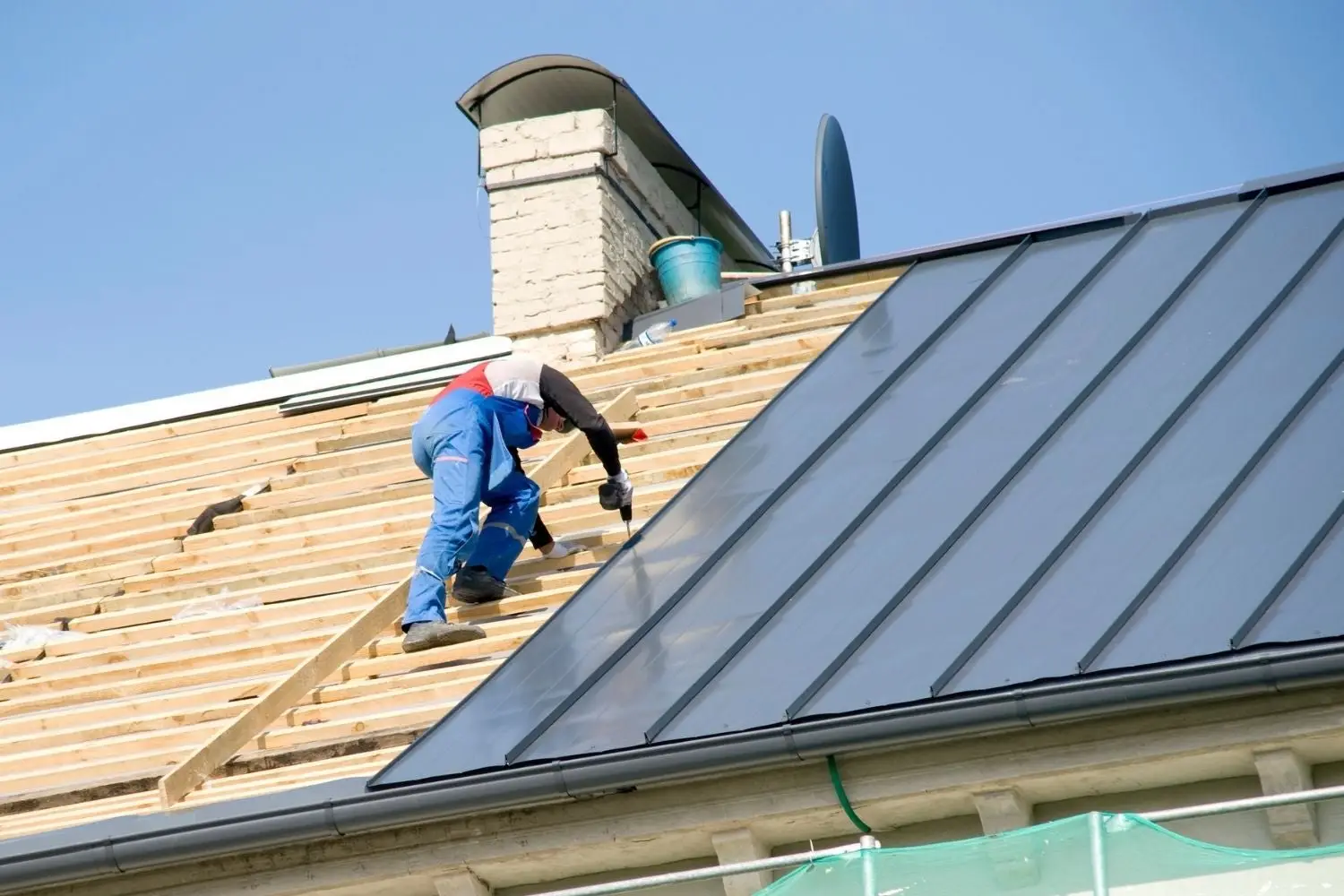Choosing the Right Roofing Material for Your Home
Your choice of roofing material is a significant decision that can impact the durability, energy efficiency, and overall aesthetics of your home.
With a wide range of options available, selecting the right roofing material can be overwhelming.
In this comprehensive guide, we’ll explore the different types of roofing materials, discuss the best roofing materials for different climates, and provide valuable tips on how to choose the perfect roofing material for your home.

Understanding Roofing Materials
Roofing materials come in various types, each with its own set of advantages and considerations.
Here are some of the most common types of roofing materials:
Asphalt Shingles
Asphalt shingles are the most popular roofing material in the United States due to their affordability, durability, and ease of installation.
Available in a wide range of colors and styles, asphalt shingles are suitable for most residential applications and offer excellent protection against the elements.
Metal Roofing
Metal roofing is known for its longevity, energy efficiency, and low maintenance requirements.
Metal roofs are available in various materials, including steel, aluminum, and copper, and can withstand extreme weather conditions, making them an ideal choice for homes in areas prone to hurricanes, wildfires, or heavy snowfall.
Wood Shingles and Shakes
Wood shingles and shakes are prized for their natural beauty and rustic charm.
Made from cedar, redwood, or pine, wood roofing materials offer excellent insulation and ventilation properties but require regular maintenance to prevent rot, mold, and insect infestation.
Clay or Concrete Tiles
Clay or concrete tiles are durable, fire-resistant, and impervious to rot and insect damage.
These roofing materials are commonly used in Mediterranean or Spanish-style homes and can withstand high winds, hail, and extreme temperatures. However, clay or concrete tiles can be heavy and may require additional structural support.
Slate
Slate roofing is renowned for its elegance, longevity, and resistance to fire, mold, and pests.
Made from natural stone, slate roofs can last for over a century with proper maintenance and offer superior protection against water infiltration and weather damage.
Best Roofing Materials for Different Climates

Hot and Sunny Climates
In hot and sunny climates, such as the Southwest United States, it’s essential to choose roofing materials that reflect sunlight and dissipate heat effectively.
Metal roofing, clay tiles, and concrete tiles are excellent options for hot climates as they offer superior heat resistance and durability.
Cold and Snowy Climates
In cold and snowy climates, such as the Northeast United States, it’s crucial to choose roofing materials that can withstand heavy snow loads and extreme temperature fluctuations.
Asphalt shingles, metal roofing, and synthetic slate are popular choices for cold climates due to their durability and resistance to ice and snow buildup.


Wet and Humid Climates
In wet and humid climates, such as the Southeast United States, it’s important to choose roofing materials that can withstand frequent rainfall and high humidity levels.
Asphalt shingles, metal roofing, and concrete tiles are suitable options for wet climates as they offer excellent water resistance and mold resistance.
How to Choose the Right Roofing Material
Consider Climate and Weather Conditions
When choosing a roofing material, consider your local climate and weather conditions. Select roofing materials that can withstand the specific challenges posed by your climate, such as high winds, heavy rain, extreme temperatures, or frequent hailstorms.
Evaluate Long-Term Durability
Evaluate the long-term durability and lifespan of different roofing materials. While some materials may be more affordable upfront, they may require more frequent maintenance or replacement, resulting in higher long-term costs.
Invest in roofing materials that offer durability, longevity, and minimal maintenance requirements.
Assess Aesthetic Appeal
Consider the architectural style and aesthetic appeal of your home when selecting roofing materials.
Choose materials that complement the overall design and enhance the curb appeal of your property.
Whether you prefer the rustic charm of wood shingles or the sleek sophistication of metal roofing, select materials that align with your aesthetic preferences.
Factor in Budget and Cost
Factor in your budget and cost considerations when choosing roofing materials.
While some materials may have a higher upfront cost, they may offer greater durability and energy efficiency, resulting in long-term savings.
Obtain multiple quotes from reputable roofing contractors to compare costs and choose the option that best fits your budget and needs.
FAQs
Q: How long do different types of roofing materials last?
A: The lifespan of roofing materials varies depending on factors such as material quality, installation, and maintenance. Asphalt shingles typically last 15-30 years, while metal roofing can last 50 years or more.
Q: Do I need to replace my entire roof, or can I install new roofing materials over the existing roof?
A: In some cases, it may be possible to install new roofing materials over an existing roof, known as a roof overlay.
However, this approach is not suitable for all roof types and may void manufacturer warranties. Consult with a roofing professional to determine the best course of action for your home.
Q: Are there any eco-friendly roofing options available?
A: Yes, several eco-friendly roofing options are available, including metal roofing, clay or concrete tiles, and recycled shingles.
These materials are sustainable, energy-efficient, and recyclable, making them environmentally friendly choices for homeowners.
Conclusion
Choosing the right roofing material for your home is a crucial decision that can impact the durability, energy efficiency, and aesthetic appeal of your property.
By understanding the different types of roofing materials, considering climate and weather conditions, and evaluating factors such as durability, cost, and aesthetics, you can make an informed decision that enhances the value and longevity of your home.
Contact SF Bay Roofing for expert guidance and assistance in selecting and installing the perfect roofing material for your home.
